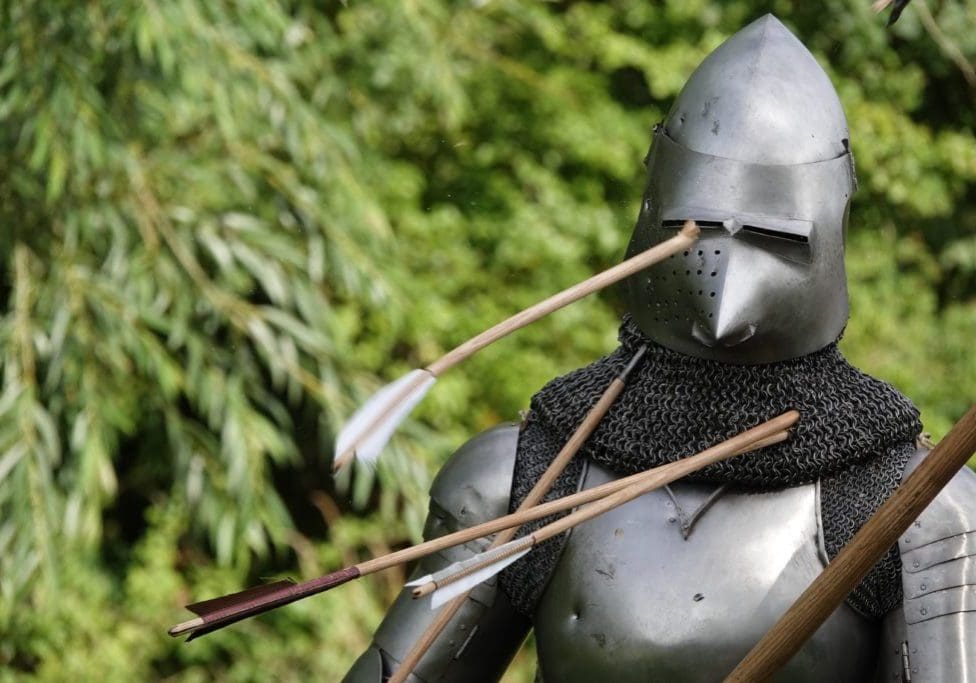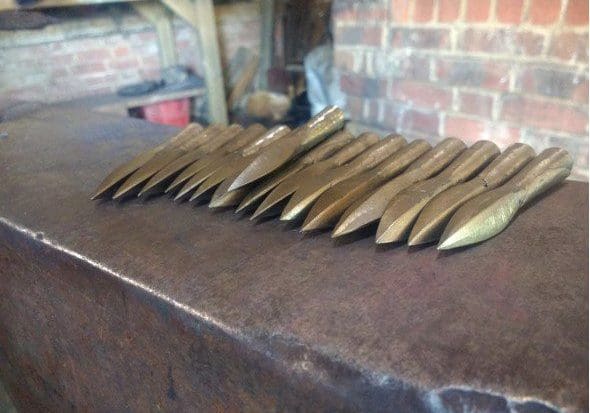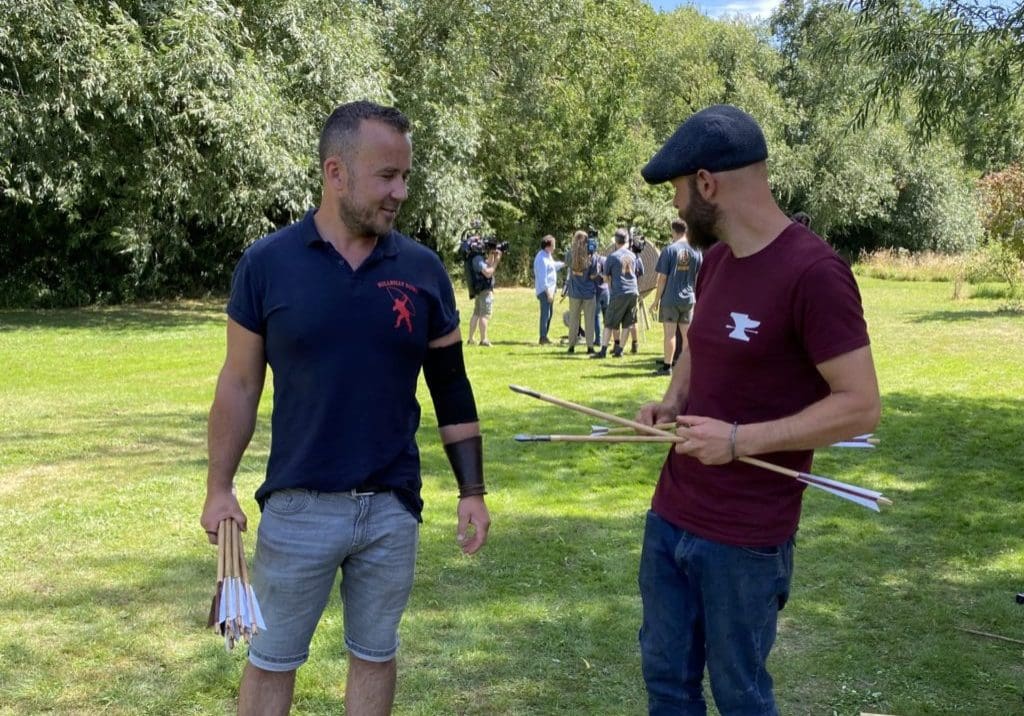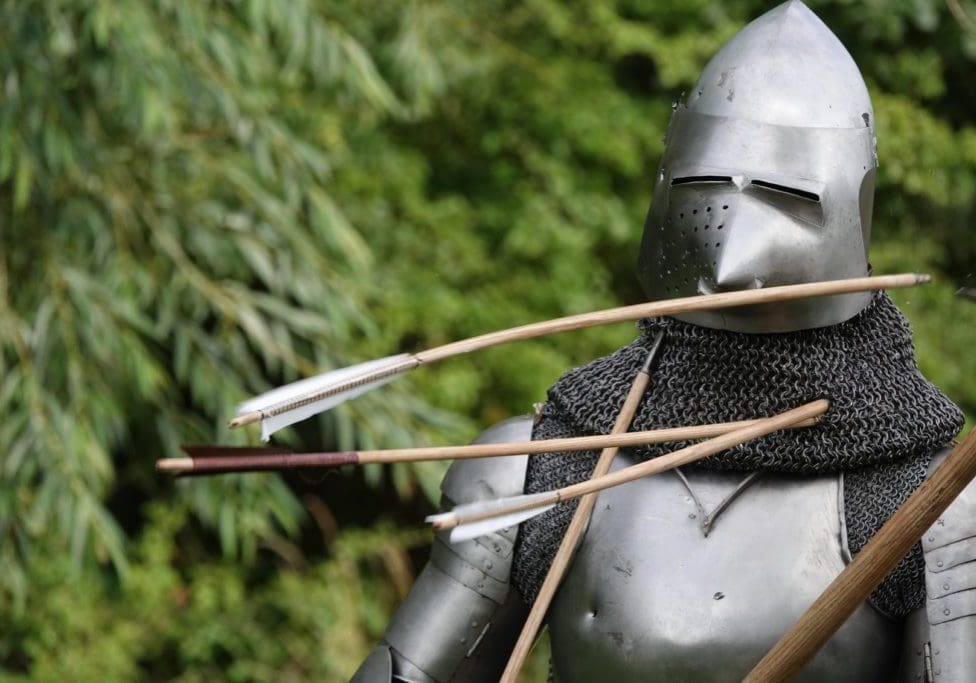Mail penetration test
Mail penetration test
How different are real and commercial mail
In earlier times mail was used as a protective augmentation worn over quilted textile armour or some other garment. It could also be lined with denser, thicker padded textile. By the time of Agincourt, mail continued to serve as a key protective material, used in concert with textile and metal plate armour. It would be quite wrong to assume that mail had been superseded or replaced by plate – rather, plates were added in an ongoing process of augmentation. In the early fifteenth century, the mail parts of a complete armour were visible around the neck and shoulders, in the area of the underarms, the insides of the elbows, and around the hips and groin.
Mail is basically cloth made out of metal, and like textile, there are mainly different weights, thicknesses, and weaves of mail, which all have different properties. Some are thicker, heavier and more inflexible, others are lighter and flow like silk. Mail could be made of iron, steel, or copper alloy. The links could have a flattened, round or oval cross-section. By this time mail was often made entirely out of riveted links, although ‘half-riveted’ mail probably still endured, wherein the weave was composed alternately of riveted and solid links. The weave could also be altered within a single garment, so that particularly vulnerable areas were covered with heavier rings and/or denser weaves.
Fully armoured knights did get shot, wounded and killed with arrows, that is a fact. The purpose of these films is to look at the mechanism of that, to better understand how bows could be militarily effective against troops who were so well protected. It is clear that, on the individual level, plate armour could deal very effectively with the threat of arrows. So how could the armour be penetrated? In what kinds of circumstances did serious injuries occur? Certainly, the areas protected only with mail and textile are more vulnernable.
For our main film we are looking hard and shooting hard at the helmet and so the neck defences are part of that and so we invested heavily in very high quality completely hand made mail for the aventail by Isak Krogh and under this is a fantastic standard collar by Phil Parkes using commercially available rings, but selecting and assembling them with care, using a 6 in 1 and a 4 in 1 weave. A full shirt would take too long and cost too much for this project (at around a dollar a link, even the extra funding can’t reach that), and is not the focus of this film. But what if we get a lucky shot to the armpit? What will it mean for our knight? This film will let us compare the two.
Because we could not get a full shirt of hand made mail we need to establish how our ready made mail compares so we have a simple test organised.
We have two samples of mail. One is our shirt for the main film and the other is a handmade sample of similar mail and one that would be typical for Agincourt. For this film we are not looking to test exactly ‘like for like’. We are testing Phil Parkes version of a typical Agincourt mail (A2 shirt in the Wallace) against a commercial shirt of ‘Agincourt mail’. Is there a noticeable difference? Remember our philosophy of ‘using the normal’ so Phil has chosen mail to be representative of what would have been used at the time rather than an outlier of excellence or low quality. He has used 7mm ID rings from 1.4mm round wire and wedge riveted. Our commercial ‘Agincourt’ mail is 7mm ID rings from a half solid, half pin riveted mail.
We have fixed each sample to a textile lining and fixed that to a sheet of archery target foam. Joe will shoot at the samples using our standard wrought iron headed arrows and see if there is a difference in how deep they go into the target. The arrows are likely to pierce the mail, but will lose some energy in the process and the left over energy will be used to penetrate the foam, so the deeper the arrow, the more energy it had left after piercing the mail.
Conclusion
Notes
Realistically needs to be done in about 2.25 hours
Rob on main camera, Mike on Chronos and GoPros, Jon on reportage, Will on Panasonic (on tripod)
Front of camera crew to be Toby and Tod. Joe is shooting
Shoot from 15m
Chronos will need to be close so we will need a side shield and a camera shield. Camera shield will have the option to fit a 8mm laminated glass plate or wooden plate with through hole for the lens. I think the chance of metal lens damaging shrapnel is very low, so think it easiest to shoot through a hole in the hide.
Arrow breakage will be very low so we can shoot 4 at each sample.
Infrastructure/kit
- Solid hide
- Camera hide
- 1 x go pro
- 2 x Cote samples
- Large foam archery target
- Front of mail shirt with cote sample sewn in
- Phil sample of mail fixed to coat sample
- Wooden target stand






